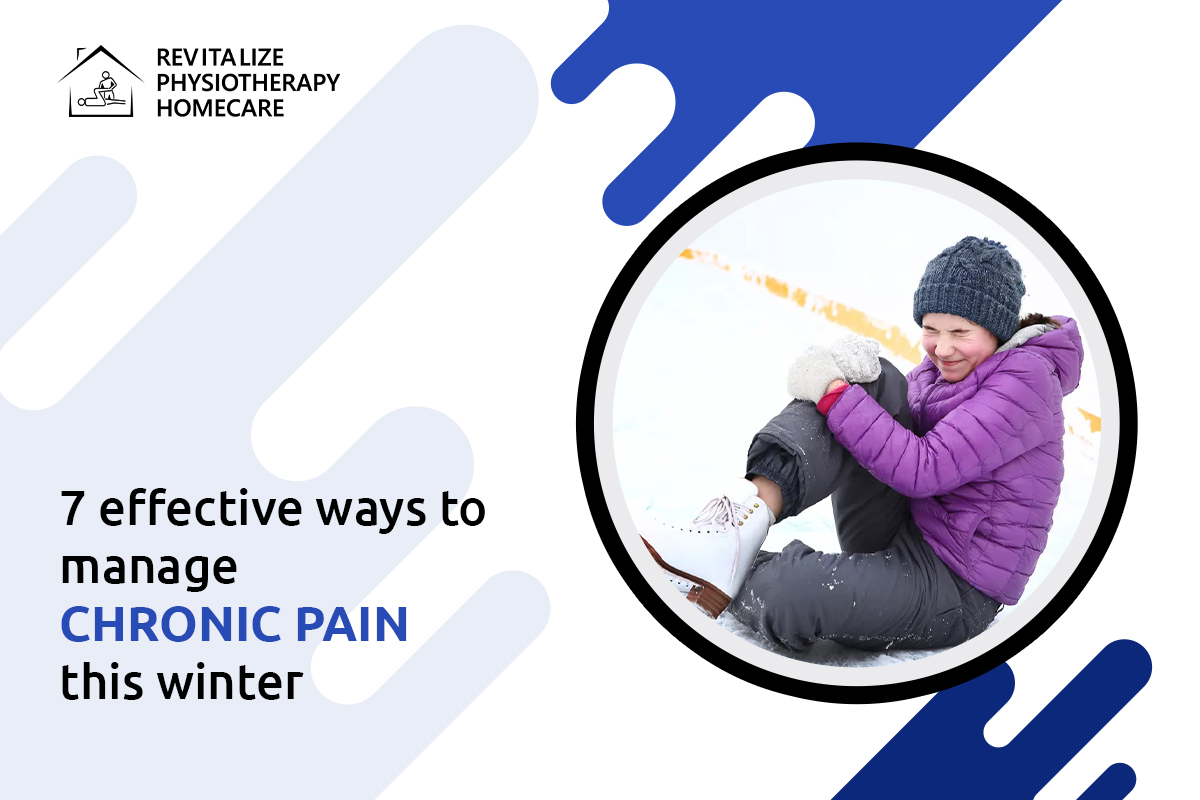7 effective ways to manage chronic pain this winter
Chronic pain can limit an individual's ability to perform their daily chores. In winter, the temperature cools down in many regions and people tend to go outside for a walk or cook special meals, and engage in other activities. It's a chilly season, which can cause problems for those who suffer from chronic pain.
If you suffer from a chronic condition of pain like fibromyalgia your symptoms could be made more severe due to cold weather. The cold winter weather can affect pain in various ways. During winters, the reduction of physical activity can cause fatigue and stiffness. Spasms and muscle tightness also are more likely.
One of the biggest challenges to cure chronic pain during winters can be arthritis, osteoarthritis, rheumatoid arthritis, gout, etc. And all these chronic pain conditions refer to the discomfort that lasts for 3 months or more. Everyday pain can be emotionally and physically draining and can restrict you from enjoying your lives.
However, there are numerous ways to deal with chronic pain in winters!
In this blog we will discuss effective ways to manage chronic pain this winter and why those pangs are caused in winters.
First let us quickly put some light on the latter!
Why Does Cold Weather Cause Joint Pain?
There are a variety of reasons winter could cause joints to be achy. The cold makes muscles appear more tight and stiff. This may result in reduced flexibility and mobility in joints. Certain studies have also linked the changes in joints due to barometric pressure in dry air, as well as other winter-related problems.
During winter due to drop in the temperature, it becomes uncomfortable and can lead to severe tingling or pain in the joints.
If you are dealing with chronic pain and want to tackle it, then below are seven ways that eases the joint pain when the frigid temperatures start to set in.
7 effective strategies to ease chronic discomfort this winter:
Here are seven ways that help you ease your pain as the temperature drops.
1.) Make sure you take medication.
One the most effective way to relieve the pain is medication. Many people blindly opt for it and it indeed helps lessen the pain. You can consider over-the-counter pain medications such as NSAIDs (nonsteroidal anti-inflammatory medicines) and prescription drugs such as DMARDs (disease-modifying antirheumatic medications) to treat joint inflammation.
The most important thing is to use medications regularly or according to your doctor's instructions.
2.) The use of cold and heat therapy
There are many methods to utilize both cold and heat. The use of heat therapy can help relieve muscle spasms, stiff muscles and joints. Heat boosts blood flow and helps loosen tight muscles. Cold therapy can help reduce swelling and inflammation since cold can reduce blood flow. Seldom, the combination of cold and heat can boost blood flow towards a specific injured area. Warm baths are beneficial to ease discomfort and Cold compresses are a better option to treat back injuries.
3) Exercise
Our body requires movement to maintain health and keep our biological systems functioning. Being seated or lying down for prolonged periods can increase the pain, rather than lessening it.
It doesn't have to be a strenuous exercise to ease the pain. Yoga, walking and stretching exercises are great exercises that are gentler. People suffering from arthritis often believe exercises will increase joint pain, but the reverse is the case. It reduces joint pain because joints are kept "oiled" and enhance the joint structure that supports it.
4.) Physiotherapy
Consulting the best Physiotherapy Centre Brampton can aid in managing chronic pain. A professional Brampton Physiotherapist will build a customized plan that addresses the root of your pain. Of the options available to manage chronic pain, physiotherapy can easily alleviate and control discomfort.
5) Eat a healthy diet
Diet rules!
Without a healthy and balanced diet no treatment can be as effective as they could be. Specialists in pain management say that eating a healthy diet should be an integral component of any treatment for pain, especially when patients are seniors.
A diet rich in anti-inflammatory food that includes lots of vegetables can aid in maintaining physical and mental well-being. It also reduces some of the negative consequences of medication, such as mental fogginess.
6) Get enough water
Hydration is essential at all times however it's more essential during winter. We often think about drinking more water in the summer when it's sunny and warm. However in winter, dry air can make people feel tired, dehydrated and stiff. Do not forget to drink water!
If you're not a big lover of water that is plain, then a cup of warm tea is a fantastic option to boost your fluids in winter. Soup and bone broth are other options for hydrating. Try to drink eight glasses of water a day, particularly if you are active or doing any exercise.
7.) Participate in therapy for coping pain
The focus on chronic pain could cause it to get more severe. This is because of the brain's power. Instead of focusing solely on the discomfort, try something more proactive like taking part in pain-coping techniques therapy. This type of therapy aid patients develop skills for managing pain.
Conclusion
It's unlikely to get rid of chronic pain completely, however, taking proactive decisions to reduce and manage the pain is essential. These seven ways of managing chronic pain are predominantly self-care methods. Each one of them may not be enough but combining a few of them in combination can make the greatest impact.
At Revitalize Physiotherapy and Homecare, we treat a lot of patients suffering from chronic pain issues, We also cater Mobile In Home Physiotherapy Mississauga.
If you're suffering from health issues, book an appointment with us now!
We'll determine the root of your discomfort and provide an effective treatment plan to make you feel better.
Thank you for reading!




